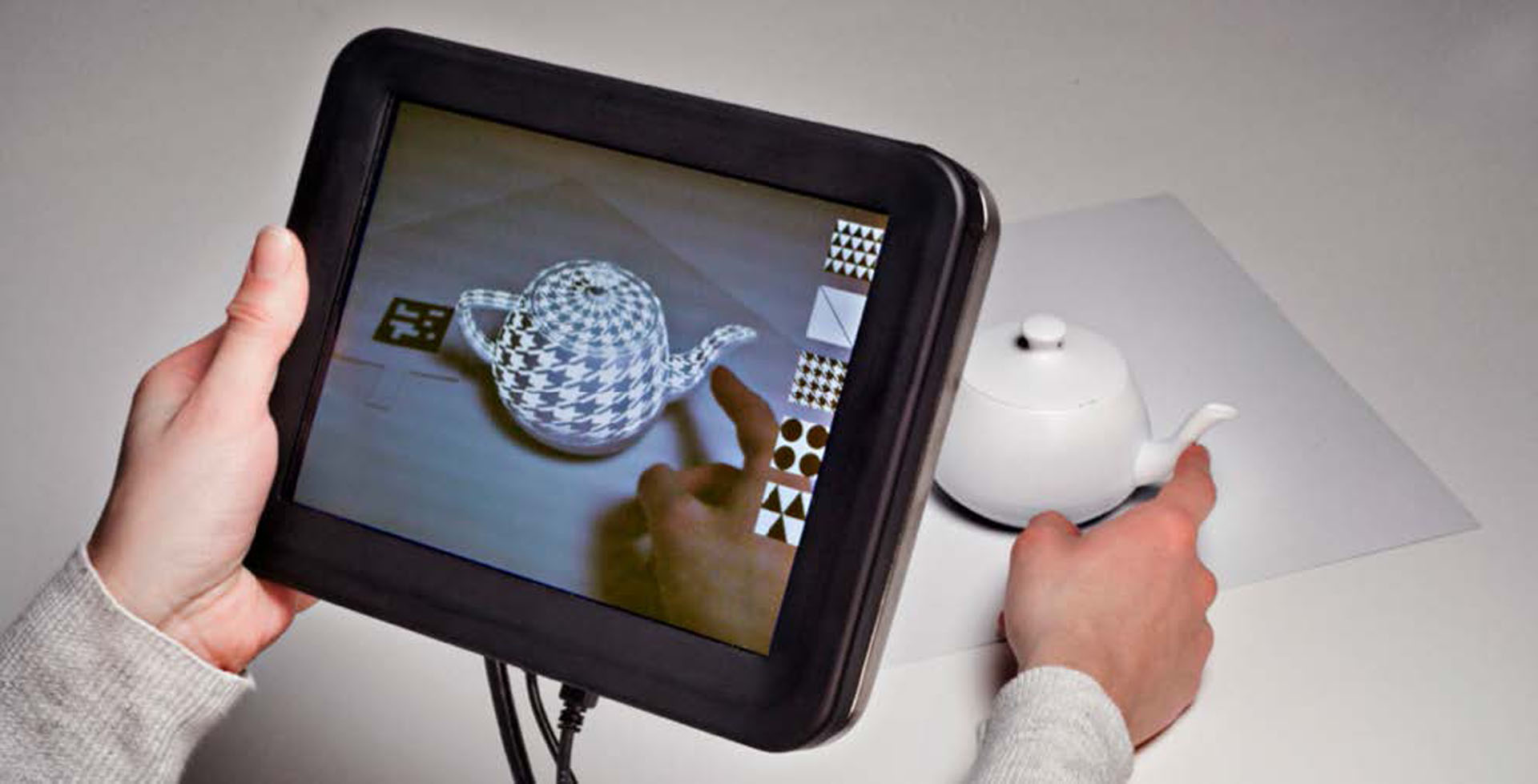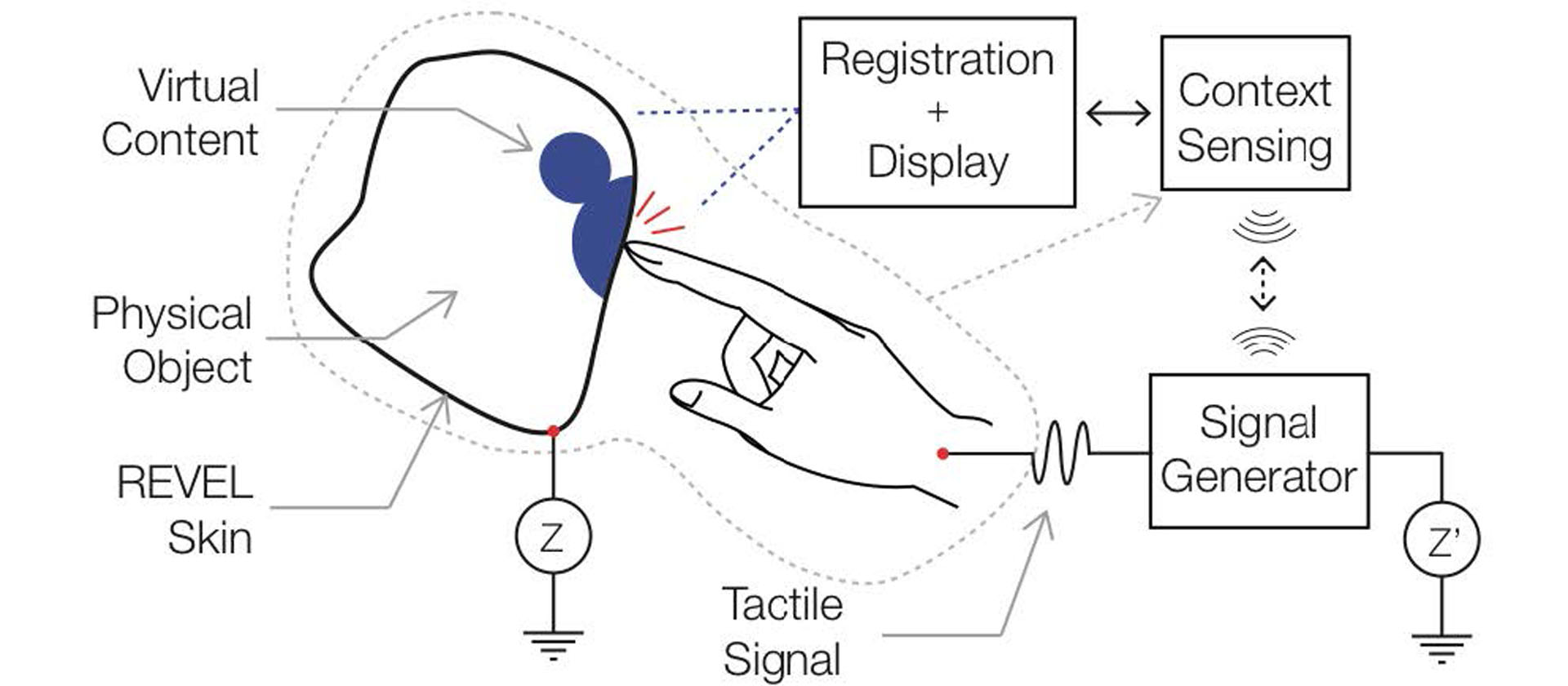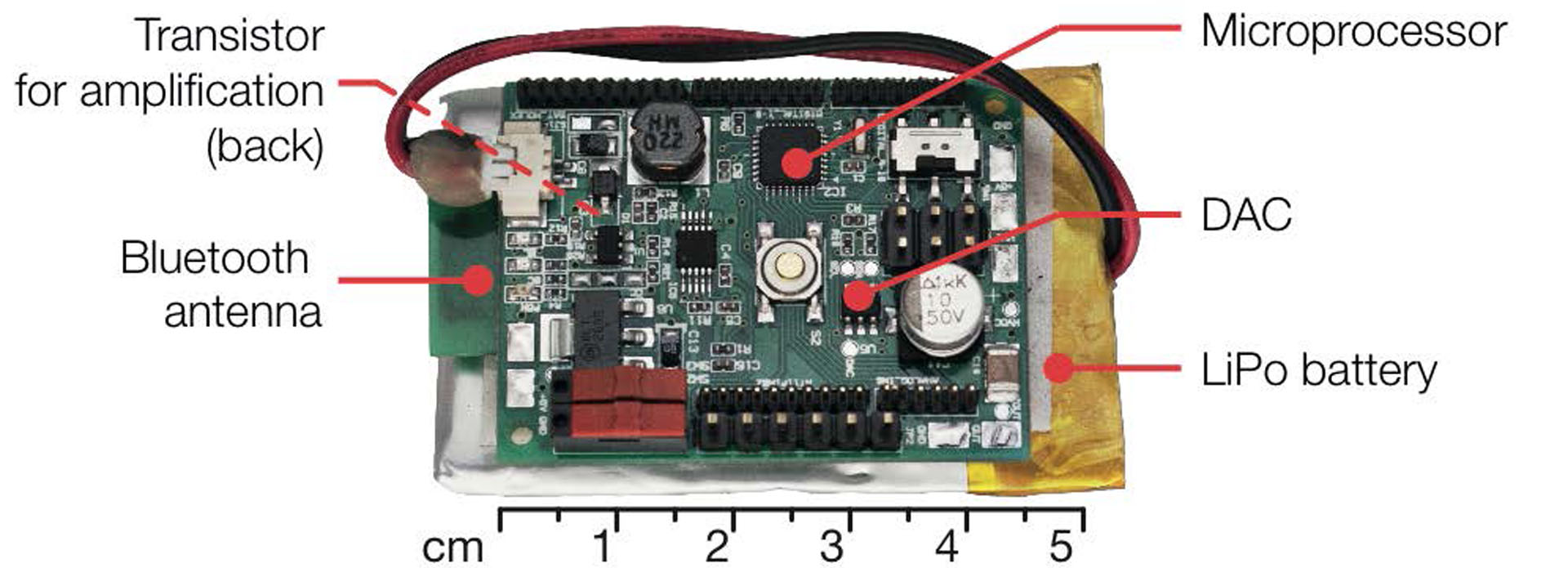“REVEL: Tactile Feedback Technology for Augmented Reality” by Bau, Poupyrev, Goc, Galliot and Glisson
Conference:
- SIGGRAPH 2012
-
More from SIGGRAPH 2012:


Type(s):
Entry Number: 17
Title:
- REVEL: Tactile Feedback Technology for Augmented Reality
Presenter(s):
Description:
Augmented Reality has recently emerged as one of the key application areas of interactive computer graphics and is rapidly expanding from research laboratories into everyday use. The fundamental premise of AR is to enable us to interact with virtual objects immediately and directly, seeing, feeling and manipulating them just as we do physical objects. Most AR applications, however, provide only visual augmentation of the real world and do not provide the means to let the user feel tactile, physical properties of virtual objects or to enhance the physical world with computer- generated tactile textures. The absence of tactile feedback does not allow us to take advantage of the powerful mechanisms of the human sense of touch and diminishes the quality of the experience.
REVEL [Bau and Poupyrev 2012] is a new augmented reality (AR) tactile technology. Using a device worn by the user, REVEL changes the tactile feeling of real objects by augmenting them with virtual tactile textures. Unlike previous attempts to enhance AR environments with haptics, we neither physically actuate objects or use any force- or tactile-feedback devices, nor require users to wear tactile gloves or other apparatus on their hands. Instead, we employ the principle of reverse-electrovibration where we inject a weak electrical signal anywhere on the user body creating an oscillating electrical field around the user’s fingers. When sliding his or her fingers on a surface of the object, the user perceives highly distinctive tactile textures augmenting the physical object. By tracking the objects and location of the touch, we associate dynamic tactile sensations to the interaction context. REVEL is built upon our previous work on designing electrovibration-based tactile feedback for touch surfaces [Bau, et al. 2010]. REVEL expands tactile interfaces based on electrovibration beyond touch surfaces and brings them into the real world, and can be used to enhance AR interaction with dynamic and unobtrusive tactile feedback.
References:
BAU, O. AND POUPYREV, I. 2012. REVEL: Tactile Feedback Technology for Augmented Reality. ACM Trans. Graphics (Proc. SIGGRAPH).
BAU, O., POUPYREV, I., ISRAR, A. AND HARRISON, C. 2010. TeslaTouch: electrovibration for touch surfaces. ACM UIST, 283-292.
Additional Images:








